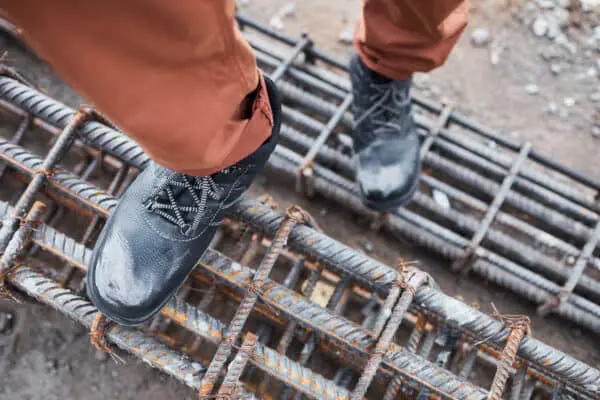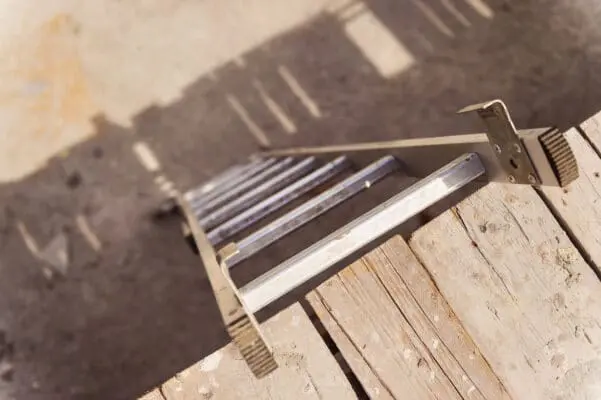On a construction site, the safety of everyone working at your site is paramount. Construction is an inherently dangerous industry, and there are many risks and dangers involved in day-to-day operations. Common dangers include slips, trips, and falls that happen due to weather conditions, poor safety practices, and a number of other factors. Preventing slips, trips, and falls onsite can be challenging, but it will have a huge impact on the culture of safety at your construction company.
What Are Slips, Trips, and Falls?
According to OSHA, slips, trips, and falls are categorized as one of the top three causes of work-related injury. Each of these describes a slightly different kind of incident:
- Slips happen when there’s a loss of traction between the bottom of your shoe and whatever you’re stepping on. This can be caused by uneven terrain like wet ground, ice, or mud; wet or greasy surfaces; poor footwear; and other issues.
- A trip is when someone catches their foot against an object or uneven terrain, causing them to trip and fall. Poor lighting, misplaced objects like tools, debris like gravel or nails, and improper safety gear also cause tripping hazards.
- A fall is a much more severe injury, where someone lands on their feet, torso, or head too hard and is knocked over. If they are not caught by a nearby person, this often results in serious injury.
Preventing Slips, Trips, and Falls on Construction Sites
Wear the Right Footwear

Using proper footwear is one of the most effective ways of preventing slips, trips, and falls onsite. When it comes to work boots, stick to ones with slip-resistant soles as these offer the best traction on smooth or uneven surfaces. Adding solid non-slip sole inserts to your regular boots can also make a big difference. These inserts add a layer of durability and grip to your work boots, adding extra protection against slips and falls. For toe protection from crushing injuries, workers should wear steel-toe or composite-toe construction boots.
Beware of Wet Conditions
During certain seasons, construction sites can be especially hazardous due to ice, snow, and other wet weather conditions. Clear walkways regularly–at least once every 12 hours during snowfall or icy conditions, and periodically in dryer months if water is allowed to collect. Keep walkways and other surfaces as free of slippery materials like mud and precipitation as possible, and consider implementing a Wet Floor policy where wet areas are roped off until they can be cleaned.
Keep Walking Areas Clear
Similarly, you want to keep your work area clear of debris on the ground, gravel, loose materials, and anything else that could cause someone to step wrong. Debris can be especially dangerous if it includes nails or other sharp objects. You may need to allocate time to cleaning up messy walking areas throughout the day.
Install Correct Lighting
Working in dim or poorly lit areas can make it difficult to see obstructions or objects like stairs and equipment that could cause you to trip or slip. Invest in lighting that illuminates possible dangers that you and your crew can avoid.
Put Up Signs

Have safety signage posted in any areas where it might be needed. Clearly marking the location of potential hazards like wet or uneven ground, stairs without railings, slippery surfaces due to spilled fluids, and more can help prevent incidents. Be sure to also post these signs at entrances to your site so that visitors or new employees who are entering the area for the first time will see them.
Keep an Eye on Cords
Some trips and falls are the result of loose power cords, cables, or similar material. You can prevent these injuries by marking these areas with caution tape or similar methods so that they stay out of your team’s way.
Cover Slippery Surfaces
You can use floor tape to create a slip-resistant surface, as well as apply anti-skid coatings and dry release chemicals for your floors or stairs. Most importantly, take steps immediately when you notice that the area is getting slippery due to spilled fluids or other hazards.
Importance of Safety Trainings
A great way to prevent slips, trips, and falls onsite is by ensuring that all of your workers have an in-depth understanding of safe work procedures. This includes knowing how to spot potential hazards and what precautions they should take when working near slippery or hazardous areas.
By consistently adhering to safety protocols at all times, you can prevent many potential accidents from happening. Investing in preventative measures like these can save you time and money in the long run, and they’ll improve the culture of safety that influences your team.
As a prominent design and construction firm in Southern California, Stronghold Engineering has received numerous recognitions for their stellar commitment to safety in the workplace. Learn more about what they do and what sets them apart in their industry.

